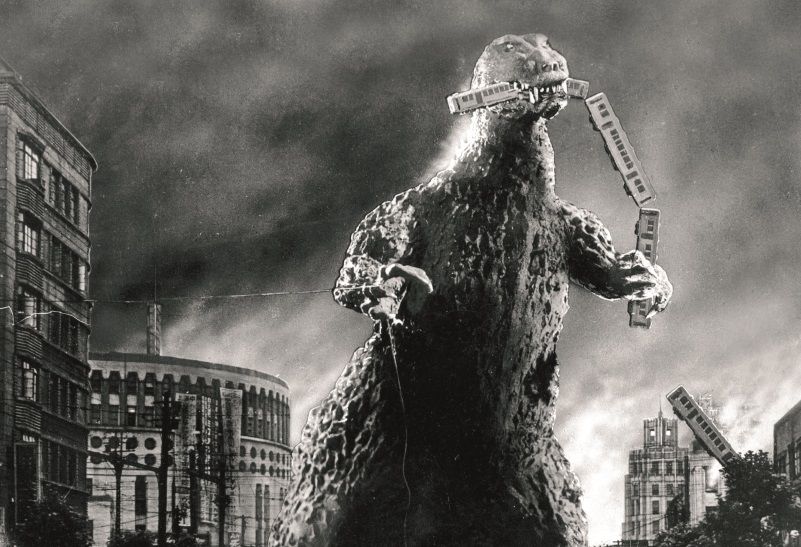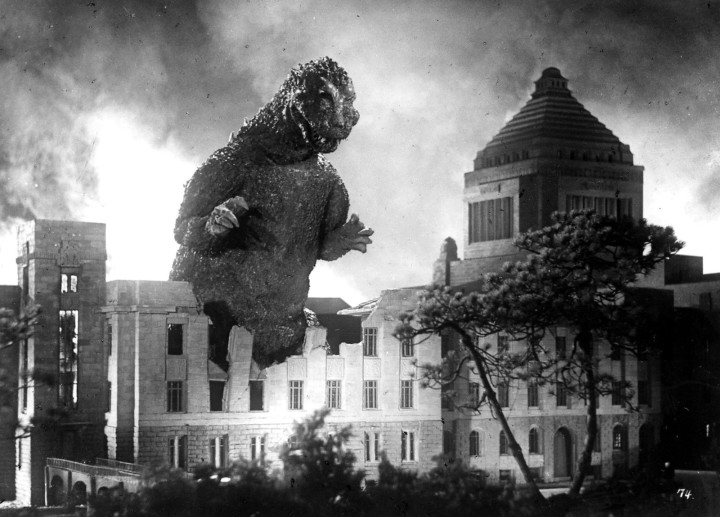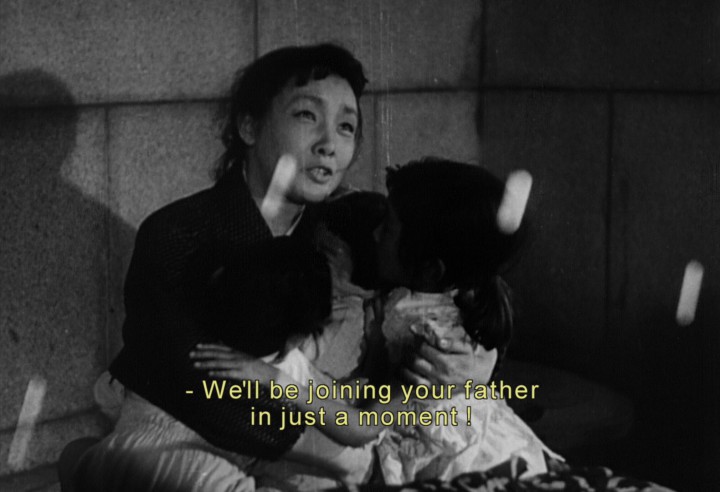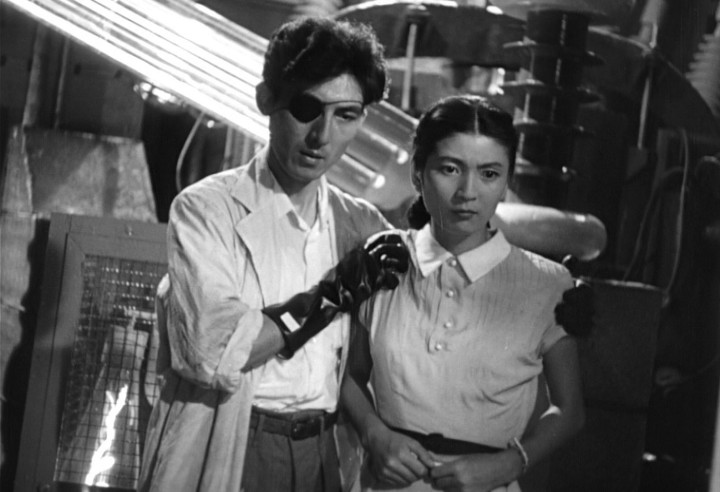When the name Godzilla (or Gojira as he’s more properly called) comes up, the immediate image that comes to mind is that of rather childish movies with guys in big rubber suits stomping around generally unbelievable miniature Japanese cities causing mass destruction while footage of grim-faced extras running around are spliced in. To some extent that’s also true of Ishiro Honda’s Gojira (1954), which was released in the U.S. a couple years later as Godzilla: King of the Monsters—with added footage involving an American reporter (Raymond Burr) and other footage excised. Even in that form, however, the film was a singularly grim affair that clearly wasn’t aimed at kids. Seen in its original Japanese version (as it is here), Gojira emerges as something of a classic—and an essential work of Japanese cinema. That’s less surprising when you realize that the film’s director, Ishiro Honda, was not only a close friend of Akira Kurosawa, but was the filmmaker Kurosawa entrusted to handle some of the sequences in Dreams (1990) when his own health was failing.
Gojira is a dark, deeply disturbing film with the specter of World War II and the atomic bomb hanging over nearly every scene. (Even when Honda’s later films became lighter in tone, the fear of nuclear devastation, the effects of radiation and the legacy of World War II were frequently present.) The monster itself—a fanciful creature awakened by hydrogen-bomb testing—is contaminated and transformed by radiation with part of its destructive power coming from its ability to breathe radioactive fire that’s eerily reminiscent of an atomic blast. What makes Gojiraa very political work are these elements combined with a war-scarred scientist who fears that using his invention to destroy the creature will only cause his device to become a tool of war. At the same time, scenes of children being tested for radiation poisoning in the wake of the monster’s attack are a pretty obvious allegory.
As filmmaking, Gojira is an accomplished work. With the monster’s rampaging taking place at night, the sketchy effects work is far more believable than in any subsequent entry in the series. Plus, Honda keeps the beast off-screen for a good deal of the time, relying on the sense of dreading what will happen. Whatever one’s take on the Japanese giant-monster sub-genre it spawned, there’s no denying that Gojira is anything but a kid flick.
The Thursday Horror Picture Show will screen Gojira (Godzilla) Thursday, Oct. 22, at 8 p.m. in Theater Six at The Carolina Asheville, hosted by Xpress movie critic Ken Hanke.







RUSSIA CITY